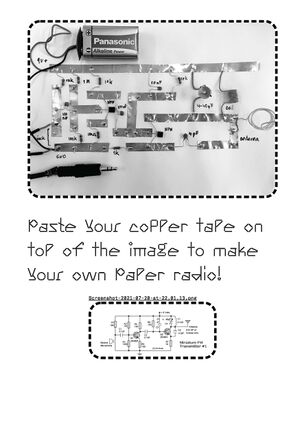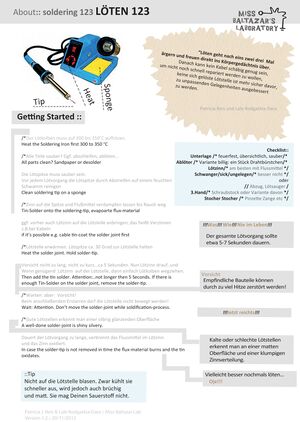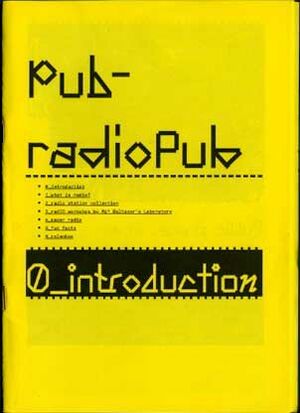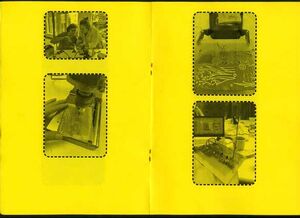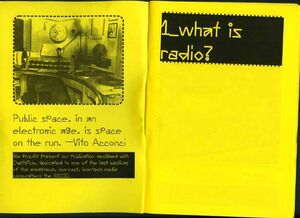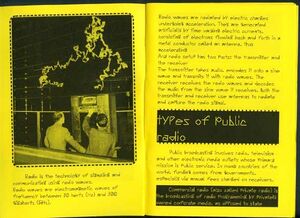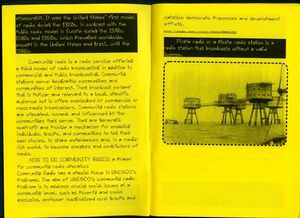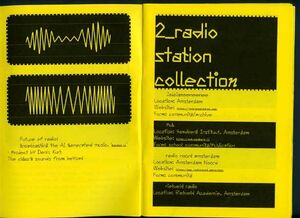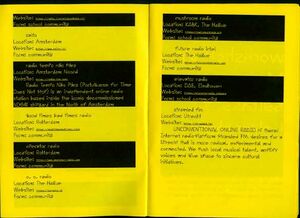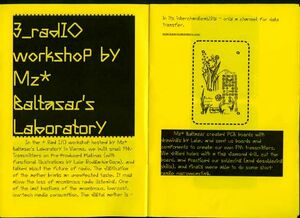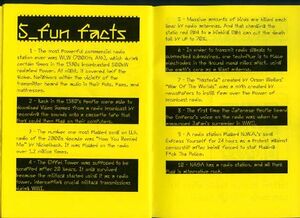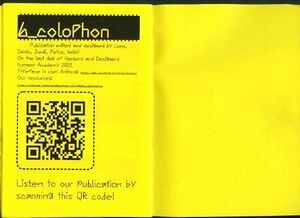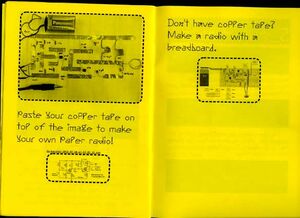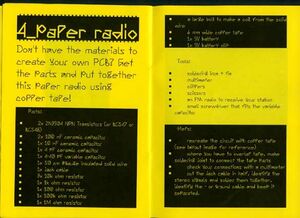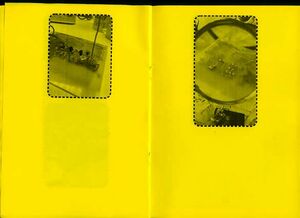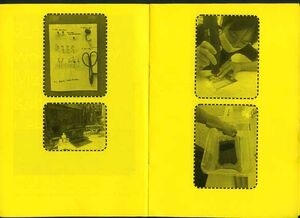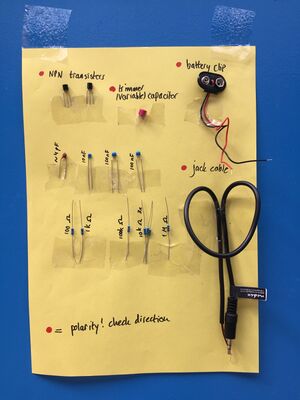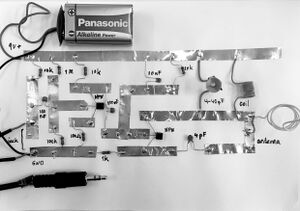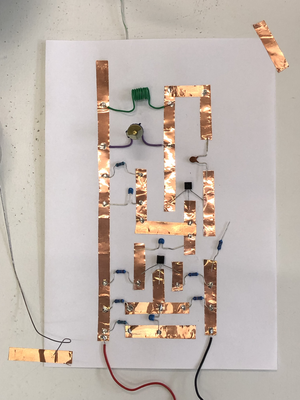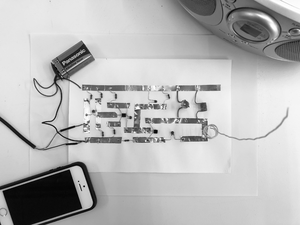Did video kill the radio (star)?
I recall a time when I was sitting in my grandma’s kitchen. I often found myself beside a weird looking, dark, crackling object. Mostly, it gave voice to middle-aged men who talked only about boring stuff. The jingles helped me to keep track of time, because they played at the exact same time every day. Perhaps the most notorious “jingle” I heard emitted from the object was the Hungarian hymn that would start playing at the stroke of midnight, marking the end of one day and the start of a new one.
Fast forward to 2021, after having received several opportunities to participate in radio-making projects, it dawns on me that radio has much more potential than the weird looking object that crackled in my grandma’s kitchen.
+Rad I/O
“The digitization of the aether brings an unexpected taste. Lastly, it may allow the loss of anonymous radio listening. One of the last bastions of the anonymous, low-cost, low-tech media consumption. The digital aether is – in its interchangeability – only a channel for data transfer.”
Mz* Baltazar’s Lab
The +Rad I/O workshop organized by Mz* Baltazar’s Lab was one of my personal highlights during the H&D Summer Academy in 2021. We were tasked with building a small FM-Transmitter[1] on pre-produced platinas. It was very hacky, super hands-on.
During my bachelor studies, I was weirdly attracted to anything that had something to do with DIY electronics and “hacking.” I would come up with grandiose ideas and submerge myself in figuring out their technicalities. These projects provided me with much more than just technical knowledge; if you ask anyone who has ever worked with Arduino, things more often than not stop working or simply never become fully functional. Somehow Murphy’s law is exponentially applied: anything that can happen will happen, and it is most likely to happen right before your semester presentation. Arduino teaches you how to be resilient and humble. You are most likely to be working beyond your comfort zone, which forces you to think outside the box and come up with alternative solutions while troubleshooting.
To me, the hands-on aspect of working with hardware is similar to cultivating an electronic Zen garden. I have found refuge in sharply-defined goals, following step-by-step instructions, and interpreting circuit diagrams. But while the format, the details of its final execution, the presentation, and oftentimes even the primary concept were destined to be modified, the hardware itself offers a controlled environment to be inventive.
The thousand faces of radio
After we secured the final bits of loose pieces onto the platinum with a soldering iron and hijacked a radio signal with our own audible input from the jack plug, we discussed how to frame radio as a medium in today’s digitally-dominant media landscape.
For this publication, I approached the voices behind the Good Times Bad Times community radio to share their insights on this matter.
- Do you think the definition of radio (making) is changing now that it is having a revival and entering the digital age of wireless Internet?
The core definition of radio-making never really changed, rather it has just found a new home. The thing that is constantly shifting is who and how people can access this media. When a technology is “made obsolete” its definition changes or rather its true value is revealed again. We appreciate vinyl for its slowness and for its physicality because that is what we lost. Radio has gone through a few of these value-shifts that the Internet itself will be able to relate. Radio changed the way we think about the world. It became a medium with so much hope, representing so much freedom, breaking through borders both physically and metaphorically only to be restrained and put in a commodifiable box by regulations. From a magical invention to being used as a military device, from pirate radios to stiff state broadcasts. But it is strange to talk about the Internet and radio as completely separate entities, the Internet could be considered the brainchild of radio.
Radio-making in the age of the Internet has managed to keep that pirate spirit alive by finding itself a little corner of the Internet to call home. It may be a new world but it knows its way around, their DNA is the same. Good Times Bad Times is using the Internet as a way of embracing that local pirate radio-making spirit along with many other local Internet radio stations.
- Inevitably, locality is an aspect of radio making, but in the case of Internet radios, these can be listened to from anywhere by anyone. When it comes to addressing local matters and global issues, where do you stand?
Whilst it is somewhat true that the Internet radio’s signal stretches further than FM/AM signals did, these signals were still used to transgress borders and give people access to information across continents. A recent example is the BBC restarting their shortwave broadcasts in order to broadcast information to Ukrainian radios when Russia began their invasion of the country. Radio has always been a global medium and Internet radio is no different.
However, local radio stations often offer glimpses of their localities to those who might not have access to it. Whether it’s local news, weather reports, the accent of the host, or even advertising for local businesses, radio can capture many aspects of locality.
At Good Times Bad Times, whilst we have always been streaming to people anywhere with access to the Internet, we have used the radio as a tool to focus on the locality of Rotterdam. The studio that we broadcast from is connected to the internet but it's grounded in a place and surrounded by a community. The connection to both the local and the global is one of the powerful aspects of radio, but where we have found real pleasure and potential in radio making is in the building, supporting, and exploring of the communities around us.
- By today, a large percentage of our mainstream (social) media content consumption comes from an endless stream of short-form videos. Can the radio be a competitive medium for fostering counterculture and freedom of expression, when not only its technology is considered obsolete, but the format itself is too challenging for our attention spans?
As mentioned before, in obsolescence value can also re-emerge. We’ve seen more and more Internet radio stations pop up, and on a more mainstream level the rise of podcast shows, that there actually is a significant demand for long-form audio-based media even if—or perhaps because—our attention spans are being challenged. Amidst the stream of snappy disconnected algorithmic bits and pieces coming at us at random, we might crave for something that unfolds at a slower pace and in a form that doesn’t require us to stare at a screen. Even more so than a podcast, radio fosters a sense of intimacy due to its live and unedited nature, both on the production and consumption of a broadcast. So all in all, we believe radio is still a powerful emancipative tool for counterculture and expression at large. Although it’s maybe hard for radio to compete with regularly checked feeds of bite-sized visual content, it offers a more intimate, durational, and situated alternative, which is by definition important—especially when you speak about counterculture.
- Good Times Bad Times (Jack Bardwell, Benjamin Earl, and Kirsten Spruit)
Paper Radio Instructions
Parts needed
- 2x 2N3904 NPN Transistors (or BC547 or BC548)
- 2x 100 nF ceramic capacitor
- 1x 10 nF ceramic capacitor
- 1x 4 pF ceramic capacitor
- 1x 4-40 pF variable capacitor
- 1x 50 cm #gauge insulated solid wire
- 1x jack cable
- 3x 10k ohm resistor
- 1x 1k ohm resistor
- 1x 100 ohm resistor
- 1x 100k ohm resistor
- 1x 1M ohm resistor
- a large bolt to make a coil from the solid wire
- 6 mm wide copper tape
- 1x 9V battery
- 1x 9V battery clip
Tools needed
- Soldering iron + tin
- Multimeter
- Clippers
- Scissors
- An FM radio to receive your station
- Small screwdriver that fits the variable capacitor
Steps
- Recreate the circuit with copper tape (see layout image for reference)
- Where you have to overlap tape, make soldering joint to connect the tape parts
- Check your connections with a multimeter
- Cut the jack cable in half, identify the stereo signals and solder them together, identify the – (negative) or GND cable and keep it separated.
- Make an antenna from a ~40cm solid core wire
- Make a coil by wrapping it around a bolt 7-8 times
- Bend the legs of the components so they reach the right copper traces and solder them to the circuit (see layout image for reference)
- Check connections again
- Hook up to the battery and a sound source with the jack cable
- Tune your FM radio and try to find your station!
- If you cannot find it straight away, tune the variable capacitor bit by bit with a little screwdriver, checking the whole FM bandwidth throughout
- Think of interesting projects to do with your short range radio station
Tips
- Play with the length of the antenna wire to find the best results
- Try different coils (the tightness, number of windings and thickness/gauge of the wire all influence the output)
- Some components have polarity, which means the right leg needs to be in the right place in the circuit for it to work. These are the battery clip (red to + [positive] and black to – [negative]), the jack cables (black to - and the other two are sound signals) and the transistor. Identify the legs of the transistors by laying the flat side facing up; the left leg is the collector (C).
List of online community radio stations in the Netherlands
- jajajaneeneenee, location: Amsterdam, website: https://jajajaneeneenee.com/, community/archive
- pub, location: Sandberg Instituut, Amsterdam, website: https://pub.sandberg.nl, school community/publication
- radio noord, location: Amsterdam Noord, website: https://www.radionoord.amsterdam/, community
- salto, location: Amsterdam, website: https://www.salto.nl/, community
- radio tempo não pára, location: Amsterdam Noord, website: https://radio-tnp.com/
- Radio Tempo Não Pára (Portuguese for Time Does Not Stop) is an independent online radio station based inside the iconic decommissioned NDSM shipyard in the North of Amsterdam
- operator radio, location: Rotterdam, website: https://www.operator-radio.com, community
- o, o, radio, location: The Hague, website: https://ooradio.nl, community
- mushroom radio, location: KABK, The Hague, website: https://radiomushroom.org, school community
- elevator radio, location: DAE, Eindhoven, website: https://elevatorradio.network, school community
- stranded fm, location: Utrecht, website: https://stranded.fm/
- UNCONVENTIONAL ONLINE RADIO Internet radio-platform Stranded FM desires for a Utrecht that is more radical, experimental and connected. We push local musical talent, amplify voices and give space to sincere cultural initiatives.
